How to get around Lahore
Lahore is arguably Pakistan’s cultural capital; a centre for art, literature, fashion, music and drama. It’s also home to some places which are immensely important to the nation’s story; the Mughal-built Badshahi Mosque, Minar-e-Pakistan, and the tomb of Sir Muhammad Allama Iqbal, Pakistan’s national poet.
However Lahore is not a small city, and if you have visited you’ll know that getting around can require a bit of planning. Public transport isn’t particularly plentiful (or convenient), taxis are practically non-existent and the rickshaw drivers will maximise their profits wherever they can.
As such, here is a quick guide to getting around Lahore, designed to help any traveller who winds up in Pakistan’s second biggest city!
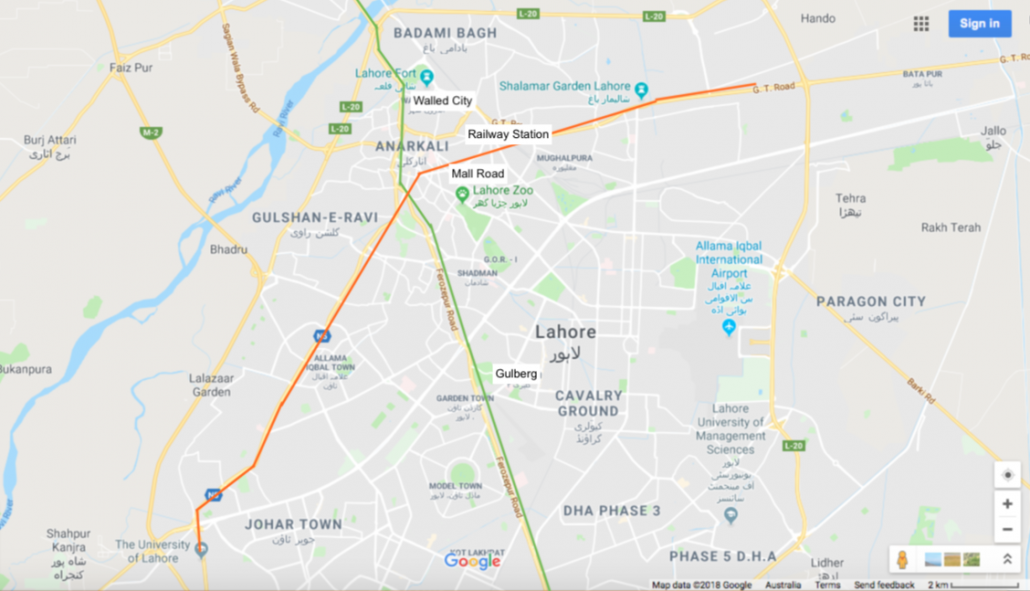
Lahore Map (Image: Google) Green line indicates approximate MetroBus route, Orange line indicates approximate Metro rail route
Public transport
Lahore’s public transport consists of a MetroBus line, a yet-to-be-opened Metro Rail line, a network of SpeedO cross-city buses, and a network of Lahore Transport Company (LTC) buses and minibuses. The SpeedO buses tend to link the outlying suburbs, and LTC provides a feeder service, so the MetroBus and Metro Rail are the main options for travellers.
Most of the accommodation options in Lahore are around Mall Road and Gulberg. Lahore’s key sights are mostly in and around the Walled City. Unfortunately the two are not linked directly by public transport.
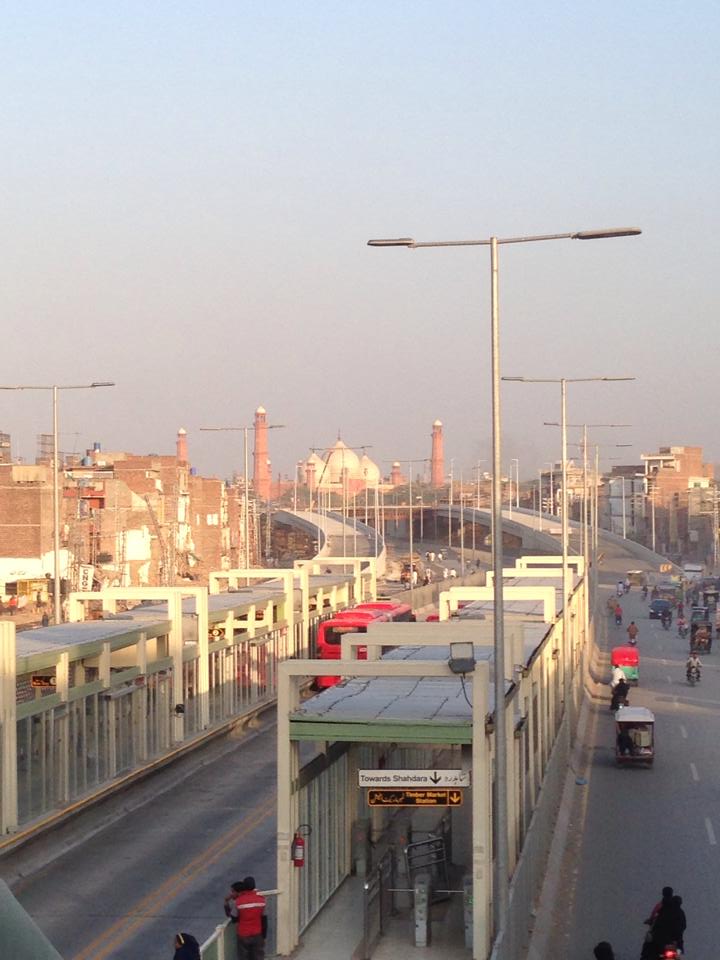
Lahore’s MetroBus system in the shadow of Badshahi Mosque
When the “Orange Line” Metro Rail opens in 2019 travellers staying on Mall Road will be able to take a train to Lake Road station, then transfer to the MetroBus towards Azadi Chowk to access the Walled City tourist precinct. Until then, it’s probably not worth bothering with the MetroBus – the rickshaw fare you pay to get to the MetroBus station would be comparable to the fare to be dropped directly to the Walled City.
If you’re staying in Gulberg, it is worth getting a rickshaw to the Kalma Chowk MetroBus station then taking the MetroBus from there to Azadi Chowk.
The MetroBus operates from 6:15am to 10pm seven days a week, except on days when security is heightened (such as on 9th and 10th Muharram). The Orange Line Metro Rail is expected to have similar hours once it’s open.
Autorickshaws and qingqi rickshaws
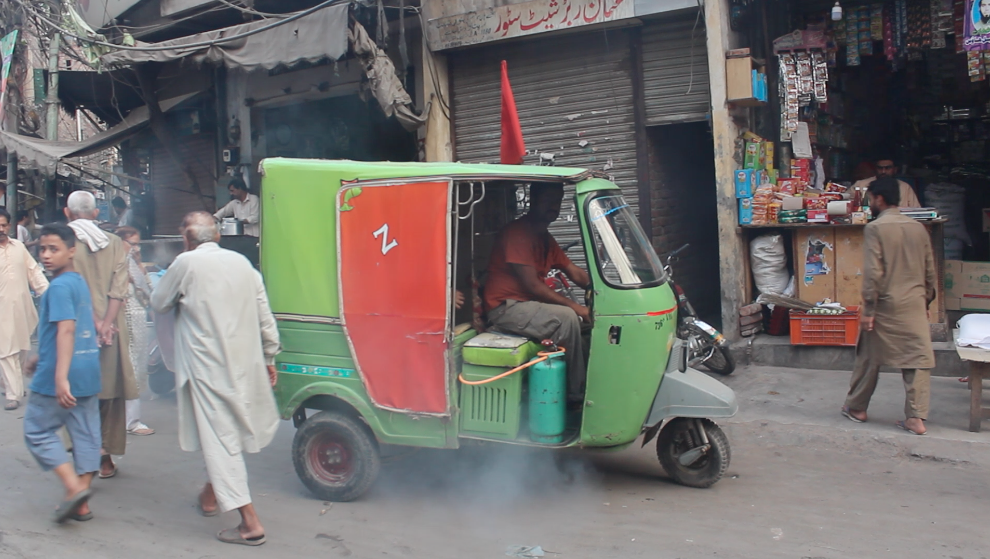
Autorickshaws, ubiquitous the subcontinent over, reliably ply the streets of Lahore. While they might not have the most honest drivers (expect to be quoted about double the proper rate for most trips), rickshaws are still one of the most convenient and cost-effective ways of getting delivered directly to your destination. To get an idea of how much they should cost, use the Uber or Careem apps to search for the fare to your destination, then expect to pay a little bit more.
So why would you take a rickshaw if you could just use an app? Sometimes rickshaws are just sitting there and ready to go, while the nearest rickshaw on the app is miles away, or even unavailable during times of high demand. A rickshaw from Mall Road to the Walled City should cost about Rs. 100 – 200, and about the same to Gulberg. From Gulberg to the Walled City, expect to pay about Rs. 300.
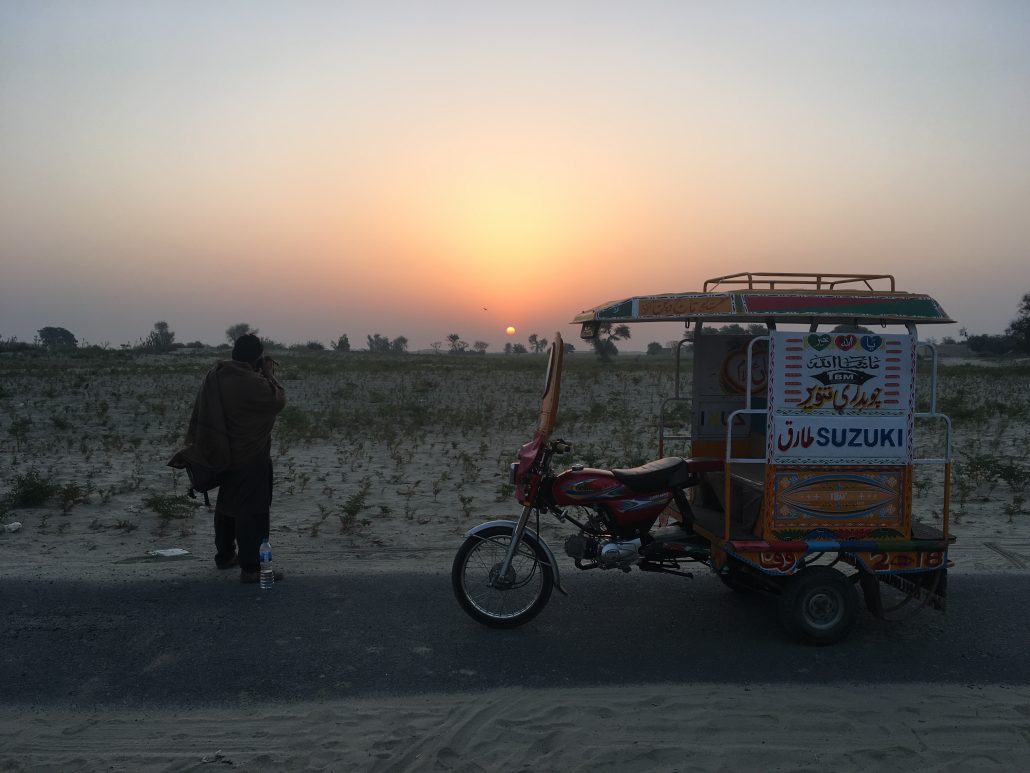
A qingqi rickshaw drops me off… in the middle of nowhere
Qingqi (pronounced “ching-chi“) are trailers with seats facing both backwards and forwards saddled onto the back of a motorbike. They are almost always incredibly noisy, and the passengers are precariously seated just centimetres away from the road surface. They have a reputation for being dangerous, cheaper versions of rickshaws.
To rent one out individually is no cheaper than a regular rickshaw, but often they are seen congregating at major bus stations and intersections and leave when full (a qingqi seats up to 6 adults). Potential passengers approach the qingqi and say their destination, and the driver will let you know if it’s on his way or not. Some passengers disembark after a kilometre, some join later in the journey, and some remain seated the whole way – you pay accordingly, but because the cost is divided among up to six people, it’s significantly cheaper than a traditional rickshaw. The downside? You don’t get to choose the destination – you just get dropped off somewhere along the way to the final passenger’s destination. Often fares are less than Rs. 50 per person, if shared along a major route.
Taxis, Uber and Careem
Taxis don’t tend to drive around Lahore like they do in many major cities around the world. A glut of private charter taxi companies have their offices at the airport, and are the most secure way of getting from the airport to the city. Expect to pay between Rs. 600 – Rs. 1000, depending on time of day, size of car and drop-off location.
Uber and Careem are popular apps which allow passengers to find rides in cars, luxury cars, autorickshaws (not qingqi rickshaws) and motorbikes. BYO helmet on the motorbikes. Fares are given as estimates before the journey, and payment is in cash. Careem offers passengers the option to add any change to their account, which will count towards their next ride. Prices are increased during periods of high demand (often called “surge pricing” or “load factor”).
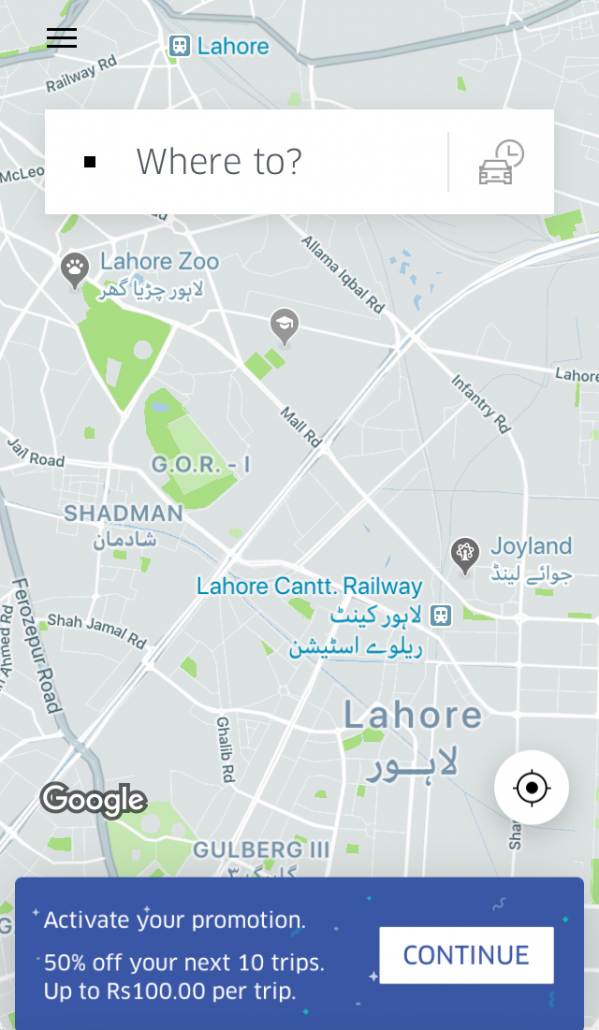
(Image: Uber)
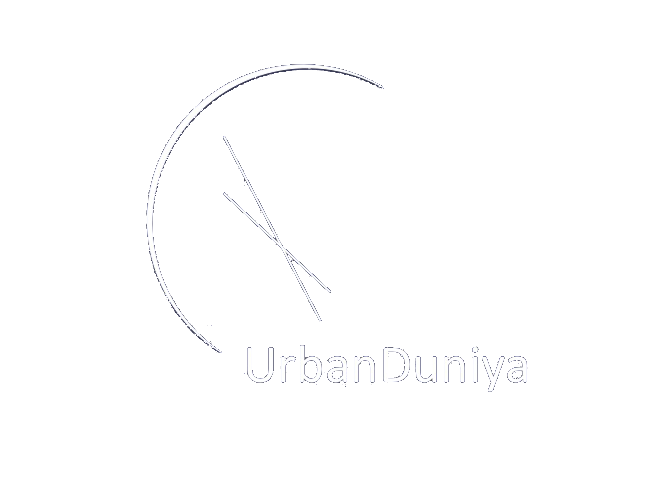
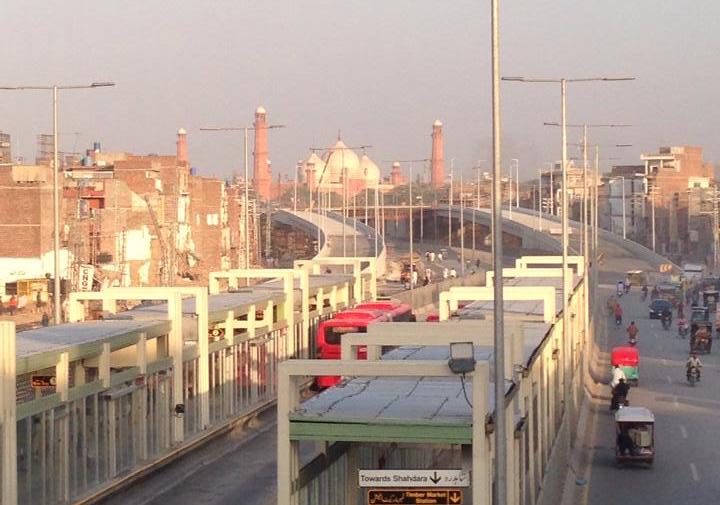
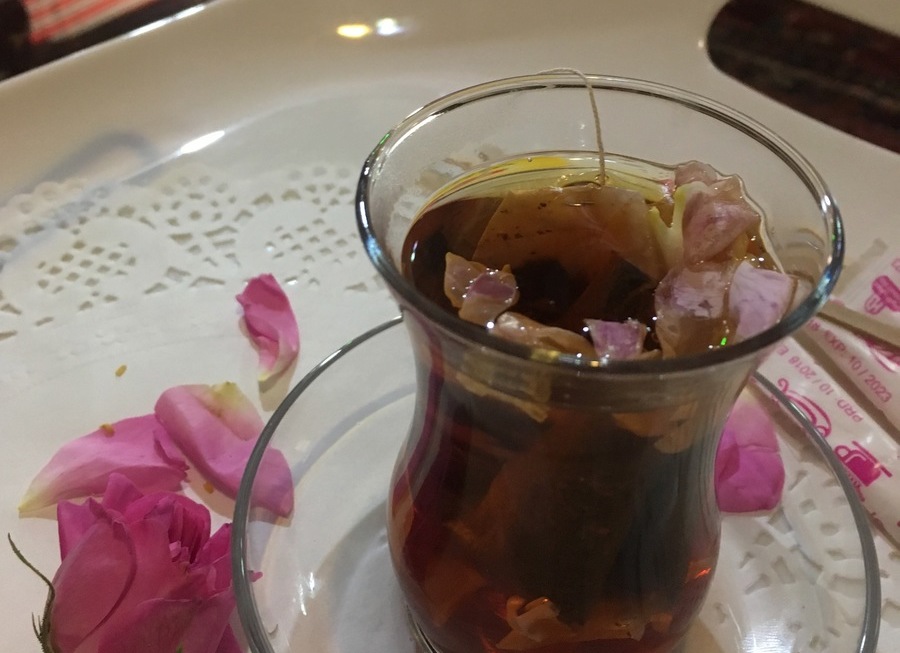


The Metrobus reminds me of the system in Lima where they run down the centre of the road and have stations like the one in your photo. sigh. Sometimes rickshaws are just your best realistic option! Until Uber-copter arrives that is!
That’s true! And nothing says “subcontinent” quite like an autorickshaw!